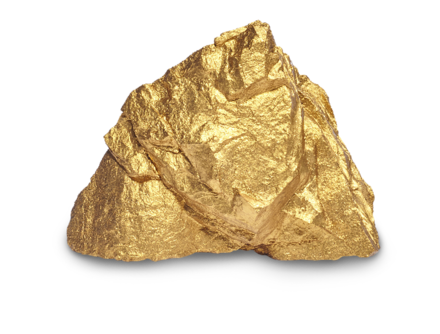The big 3 of biocompatible materials in dental technology
Health awareness is increasing in the population and allergies are becoming a widespread disease. This means that more and more patients request information about dental prosthesis materials and their composition.
The patient's demand for biocompatible dentures has various reasons: while some struggle with allergies and therefore cannot tolerate frameworks made of cobalt-chromium alloys, others have adopted a mindful and largely metal-free lifestyle.
Finding a remedy for allergy sufferers is not that difficult, well-tried materials are definitely an option for them.
1. Dental gold - pioneer of biocompatibility in dental technology
Gold is one of the longest used materials in the dental industry and has proven itself well into the time of CAD/CAM technologies.
Due to its extremely good corrosion resistance and thus very good biological compatibility, gold is still a good alternative to cobalt-chromium alloys. Platinum, which is often added to dental gold because of its physical properties, also guarantees good compatibility, as it is practically insoluble in the patient's mouth.
Gold is not only beneficial for the patient, but also for the dental technician. Because its warm tone makes it easier to achieve a natural coloring of metal-ceramic dentures. In contrast to a few years ago, the possibility of manufacturing gold frameworks using the CAD/CAM process eliminates the risk of casting errors and the expensive storage for dental laboratories. With LaserMelting Gold there is also - as with conventional technology - the option of scraping, so that expensive material can be saved.
2. The miraculous material titanium:
corrosion rates similar to those of gold
But there is also a good alternative for patients with allergy problems among the non-precious metals. The corrosion rates of so-called pure titanium are in the range of those of gold. Allergies in connection with this material have so far only been proven in individual cases. If you are not sure about this, you can request a material sample for an allergy test.
Titanium has long been unpopular in dental laboratories because of the challenges involved in casting. Here as well, digitization in manufacturing has advantages. Frameworks manufactured in CAD/CAM are free of voids. Ceramic veneering is also made easier by a smaller alpha-case and thus a better adhesive bonding.
Both the precious gold and the non-precious variant titanium are metals. Therefore the following question arises: is there also a non-metallic biocompatible alternative?
3. PEEK plastics:
- the metal-free biocompatible solution
CAD/CAM technology also offers a solution for patients who would like to avoid metal. Like its metallic counterparts gold and titanium, the high-performance plastics PEEK is extremely corrosion-resistant, which makes it a very biocompatible material. Its modulus of elasticity comes very close to human bone, and it is a very light material. Not least because of these properties, PEEK has been used in medical technology for around 20 years, especially in spinal, facial and trauma surgery. In dental technology, this high-performance plastics is used for both fixed (e.g. implant abutments) and removable dentures - such as partial frameworks. Since there are no restrictions on wearing time with PEEK plastics, it is a good alternative to metal in terms of functionality.
CONCLUSION
The dental industry also offers some biocompatible alternatives for allergy sufferers and health-conscious patients. Depending on the requirements and wishes of the patient, a metallic or non-metallic solution can be used. All materials have advantages and disadvantages, which must be weighed up depending on the situation. Thanks to the latest CAD / CAM technology, the disadvantages for the dental laboratory are much lower than they were in the field of conventional dental technology.
